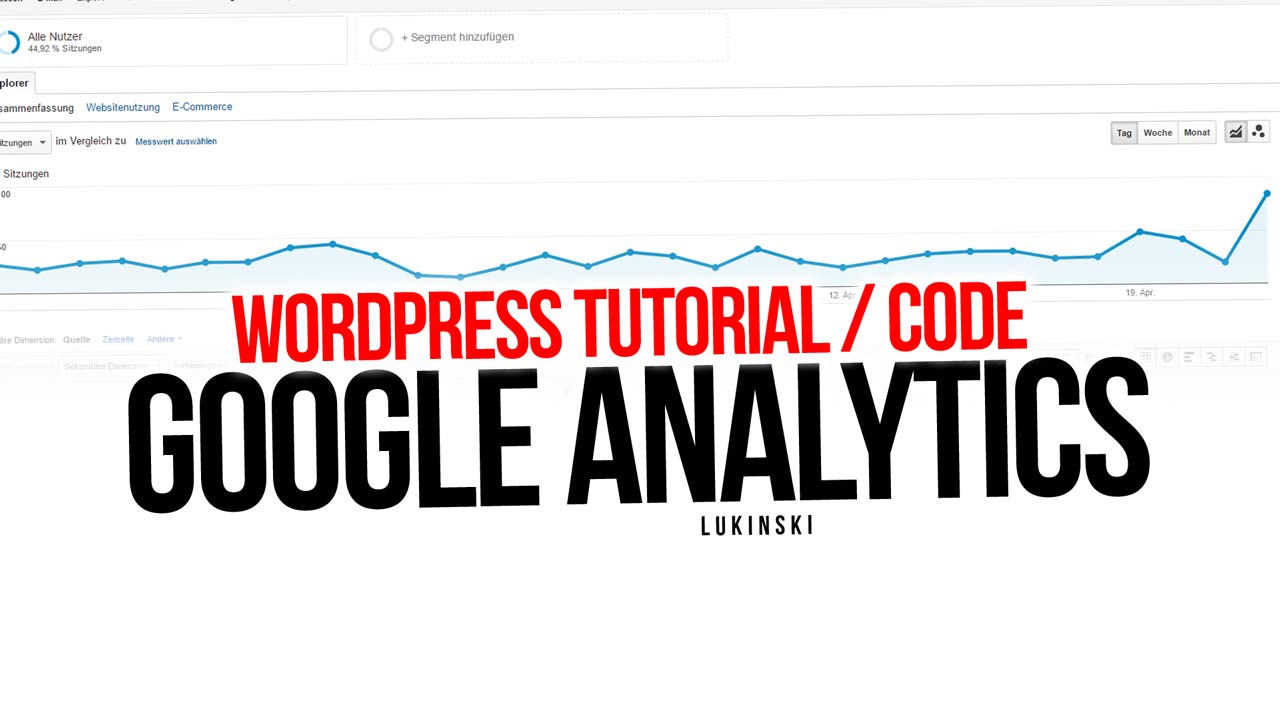SEO Content Spinning: Online Tools and Content Spinner Alternative – That’s how it works!
In our advertising agency, we naturally deal a lot with the topic of search engine optimization. Content spinning is on your topic, about which we are asked questions. Here it is about security in content spinning but also about the effectiveness in search engine placement. Nowadays search engine placement is the be-all and end-all when it comes to online marketing. Just as there are streets in the city centre where there is more traffic, there are also search terms on the Internet where there is more traffic – i.e. search queries (keywords) that are queried more frequently.
- First info and How To: SEO Content Spinner
[shortcode variables slug=”adsense”]
These keywords are of course extremely different, depending on their diversity but also depending on the use of geographical or demographic data. Content spinning or content spinner allow for a diverse text creation – out of one, hundreds, thousands of texts are created.
The more you can serve different individual needs of the target group or readers, the longer visitors stay on your website or online shop and the better pages are placed in search engines. The more precise and focused the texts or the larger and more extensive they are, the more successful they will be in search engine rankings. A lot of work lies ahead of us!
Content spinning – what does content spinning software actually do?
Many people hear about content spinning from other people and entrepreneurs and, when they hear about the successes, they immediately think of their own company. Can I get more traffic through content spinning?
Thousands of sites, for every state, city and district. Yes, some spinning on street names. That’s not just thousands of records, but tens of thousands. Thousands of texts would be difficult to produce in your own company, hundreds alone. Why?
Qualitative texts for unique page contents = long retention time of visitors
Employees who are not extremely trained in the texting of search engine content, need for the creation of a relevant search engine text with a minimum length of 1200 words per article easily 3 hours, if the research is intensive – which it usually is, topic: quality.
Depending on the subject area, real estate, sports results, doctors, food, fashion or trend products, the qualitative demand in the texts and of course the amount of text varies.
So if your employee only manages two or three texts a day and you need at least – at least – 500 such individual pages even for a large website or a large online shop, you can quickly see how long such a content marketing project can take.
Content production for online marketing is very time-consuming
Whether with the help of an advertising agency like ours or content marketing in your own company, the creation of content, especially search engine texts is very complex and costly without experts. Even with experts the expenses for a new project are high. Some advertising agencies but also companies therefore resort to experts in content spinning.
Which companies and businesses use content spinning?
Classical industries for the use of mass text production are online shops, the real estate and housing market, travel companies but also private universities and insurance companies (generally often in the context of affiliate marketing). Many generate texts that cover the needs of the target group as well as possible and increase the time spent on their own site.
However, until enough visitors come to the pages, search engine optimization and thus the creation of texts by the own employees is needed. Let’s calculate how long it would take an employee to write a page that is relevant for search engines.
- 1 employee can produce 3 texts a day with good quality, with practice, rather 2 with extensive research
- 1 employee works 5 days a week, minus holidays, sick days and public holidays, but only 3-4 days a week on average
- 500 texts need a whole year
If 500 texts are to be created, a single employee would therefore need 40 weeks – minimum if no other work is involved. For many industries and countries, 500 texts are only the beginning. If you want to build a really large site, you should go for 1,000 texts or 1,500 texts with a respective minimum number of words (1,200). In addition, there are external media, YouTube embeddings or embeddings from other social networks such as Instagram, Facebook, Twitter or Pinterest. In addition, HTML, CSS and other elements such as tables ( <table> )and headings ( <h1>, <h2>, etc. ) are also included.
Content Spinner: syntax, articles and variations
Content spinning is mainly about the variation of basic texts. This involves taking individual phrases, even individual words, and creating several variables from them. Variable by variable, the construct becomes more complex, even though the individual steps are relatively simple and can be understood by everyone. Here is an example from the SEO Content Spinner:
{{{Beauty and elegance|Elegant and beautiful}|Big and representative|Modern and ecological} house
Spinning is therefore concerned with generating many, single, different possibilities from a single text. A big sticking point: grammar. Here is an example sentence, do you recognize the grammar of each sentence? Important: Don’t get discouraged, the explanation goes on!
{House with {modern design and ecological structure|ecological structure and modern design}|{{Beautiful and elegant|Elegant and beautiful}|Big and representative|modern and ecological} house}
By increasing the different variations, as in the example here, the text becomes more and more multi-faceted and with each export also more individual. The more unique a text is, the better it is placed by search engines – keyword: Uniquness of texts. Let’s go one step deeper into the matter:
Spinning words, sentences and paragraphs
The deeper you go into the project, the more extensive the associated spinning project files become. A good spinning project quickly reaches a size of 40 or 50 A4 pages in font size 9. To get an overview here, because the texts are coded as seen before, is a real challenge for everyone who is concerned with the topic of symmatics and grammar in spinning. From the different text parts and sentence elements larger paragraphs are then formed, these form larger sense sections and are placed so that the most important information is always at the top of the page.
Onpage in search engine optimization
Various studies and also analyses from the major search engine providers such as Google show that very few people deal with the further information when visiting a website or online shop. What does this mean for our Spinning Text? As soon as someone visits a website of a company or an online shop on his notebook, for example, he ends up on the start page or on another single page. This single page usually offers the most important information at first glance. This means that you are not at the end of the page, but directly at the beginning. Many users break off at the very first second, at least in the process of scrolling: Some leave the page again immediately because they cannot find the desired information at first glance, others use the main menu to navigate further and others go straight to the start page. There are many possibilities that lead to a – in our ideal case – abort.
Therefore all relevant information of such a content spinning project must always be available directly at the top of the page. Think also of mobile devices, which now account for a large part of the reach and visitors for many online shops and sites. They have no sidebar, no large display. Everything important must be right at the beginning of the website (unless it is unintentional for strategic reasons).
So in Spinning Text some paragraphs are swapped with each other and others get a fixed position. So only certain paragraphs are swapped with each other. A tip: For weaker traffic pages, with less visitors, you can also swap these places once in a while to keep the general uniqueness of the texts.
How can you strengthen the content (pages) for more visitors?
Content spinning of course does not only deal with text variations, but also with possibilities to integrate external media content. That means to display videos or other media content on individual pages and on others not – variation. For example, one video is embedded on 17% of our pages, another only on 3% of the total pages.
Although each individual text is about a specific industry (real estate, insurance, fashion, etc.), the texts also alternate with videos, photos and links. So we have many possible single pages that change in their text content, length, grammar, manner but also in the media content displayed.
If you have understood the basics in content spinning, you can use tables in the next step. As you can read in the article of SEO Content Spinning, different data can be integrated into the exported texts through a table. This could be, for example, geographical data about the most important capitals or larger cities with 50,000 inhabitants or more. The data can be even more precise, e.g. on streets or certain places and locations. Voila: We have tens of thousands of records.
Tables in the Content Spinner: CSV for geographic and demographic data
A single table consists of columns and rows. For content spinning it is important to have all the information within a single existing database. This database is later exported as a CSV file. This serves as the data basis for the individual pages (e.g. population data of Chicago, Las Vegas, Dallas, etc.), which are then loaded into the spinner software during export. If you now open a variable of the table (first row) in the text with two square brackets and close it with two more, the first row of the table containing the variable is accessed and its data set is dragged. Here is an example, our table contains 3 columns. These are called (first line):
- Stat>/li>
- Inhabitant
- Square kilometers
In my example set I now use these variables. Here I could write e.g.
- For every square kilometre in [[city]] there are [[inhabitants]], despite an area of [[square kilometres]].
This text can then be multiplied by variables, the Content Spinner snaps a new line with every text export. The next sentence would then read, for example
- With 412 inhabitants per square kilometre, more inhabitants live in district XY of city XY than in the rest of the conurbation.
- A total of 112 people live in district XY2 of city XY2, making it a very quiet area.
“If” functions for evaluation of data in the table
Within tables, certain values can be calculated using “if” functions.
An example: If the average number of inhabitants per square kilometer is below the average of the city, then we can call the district a quiet area. If the average number of inhabitants per square kilometre is above the average of the city, then we know that it is a more crowded district, because there is less green or possibilities for leisure, e.g. for families. How exactly such data is calculated and which statistics and studies are used as a basis can be found in the further explanation of the SEO Content Spinner.
Content Spinning Software, recommendation and experience
Of course, any renowned online marketing expert, nerd or developer who is more often in contact with the subject of search engines will sooner or later try to create masses of text. I have used other software so far. After some practice and a few example projects, a little practice means a few months of training, but in spinning software you reach your limits.
The various offline software tools currently available on the market have all the basic skills but do not have the capabilities that will be needed in 2018 and in the following years 2019 and 2020. For this reason we decided at the beginning of this year to develop our own software, web-based, 128x faster in export and theoretically without database limitations. Let’s have a look at a few examples where you come up against limits in other programs (offline and online).
Database limitation
Spinners usually only create about 40 columns during processing. With larger amounts of data, which are regenerated from studies or statistics, you will reach unnecessary limits. The age structure of a certain city alone, staggered in a 5-year rhythm (0-5 years, 6-10 years, 11-15 years, etc.), already takes up 10 columns of text spinning. This leaves you only 30 more columns.
Error message and wasted time without syntax error
Even without syntax errors, i.e. without brackets set incorrectly, there are often error messages and the text cannot be processed further. Especially if you have already worked for more than 15 or 20 minutes, it is very annoying if an error message is displayed without an actually existing syntax error.
Set rotation and paragraph rotation do not work perfectly
Twisting single sentences with each other or single paragraphs are no problem in the professional software. When combining and linking these possibilities (randoms = random sentences and randomp = random paragraph), however, errors are immediately played out. It should make no difference if, for example, spun sentences are within spun paragraphs.
Publication in WordPress only with corrections
WordPress is the most popular content management system today, in which not only many advertising agencies and Internet agencies work, but also many companies and businesses. However, there are occasional complications when linking and some details are not perfectly adjustable, e.g. the keywords or the categories. In addition, it is not possible to plan the days of the week in the publication, so that one publishes constantly, i.e. does not have a normal weekly rhythm. A circumstance that could of course (in case of extremely mass output) indicate that the texts are not organic, i.e. not created by humans.
Calculation time for the text export
If you create spinning texts on a high level, the calculation times for your texts will be intensive and long. For a complex spinning project the export of a single text easily takes three or four minutes. On web-based systems, the servers calculate a single text within two seconds.
Offline software limits flexible access
If you want to continue working on texts on the road, it is not possible, because most software products are equipped with a special key that only runs on a computer. In today’s world, between cloud computers and constant networking, the presence of software on only one device is of course very disadvantageous. Especially for internet agencies and managers who are often on the road.
Therefore it was important to create a web-based, flexible and powerful solution for a content spinner (link below and at the beginning of the article).
Export to WordPress and Content Management
If you are still working with a classic offline content spinner, you often have to make an error check at the end of the export. To do this, you export all texts into individual files and then merge the text files. How to do this with a few clicks, I describe here in the tutorials, in the article: join text files.
Also new is our short explanation for filenames: Import file list into Excel.
Web based content spinner, the best software
For those who want to do content spinning on a first-class and high level, we now have the perfect alternative for the common content spinner and many other products. With almost unlimited database processing, fast servers that revolutionize text export in terms of time, constant retrieval from anywhere in the world and, of course, from any device! This makes the SEO Content Spinner the software solution. The full software package is not free of charge but the investment is worth it. Smart features and smooth processes within the software take content spinning to an absolutely new level.
- Release: SEO Content Spinner November 2018
- Extremely limited access for experts and agencies
- Li>First info and How To: SEO Content Spinner
[shortcode variables slug=”adsense”]









